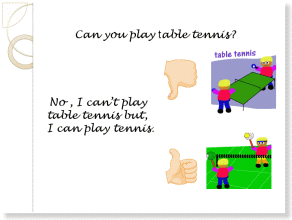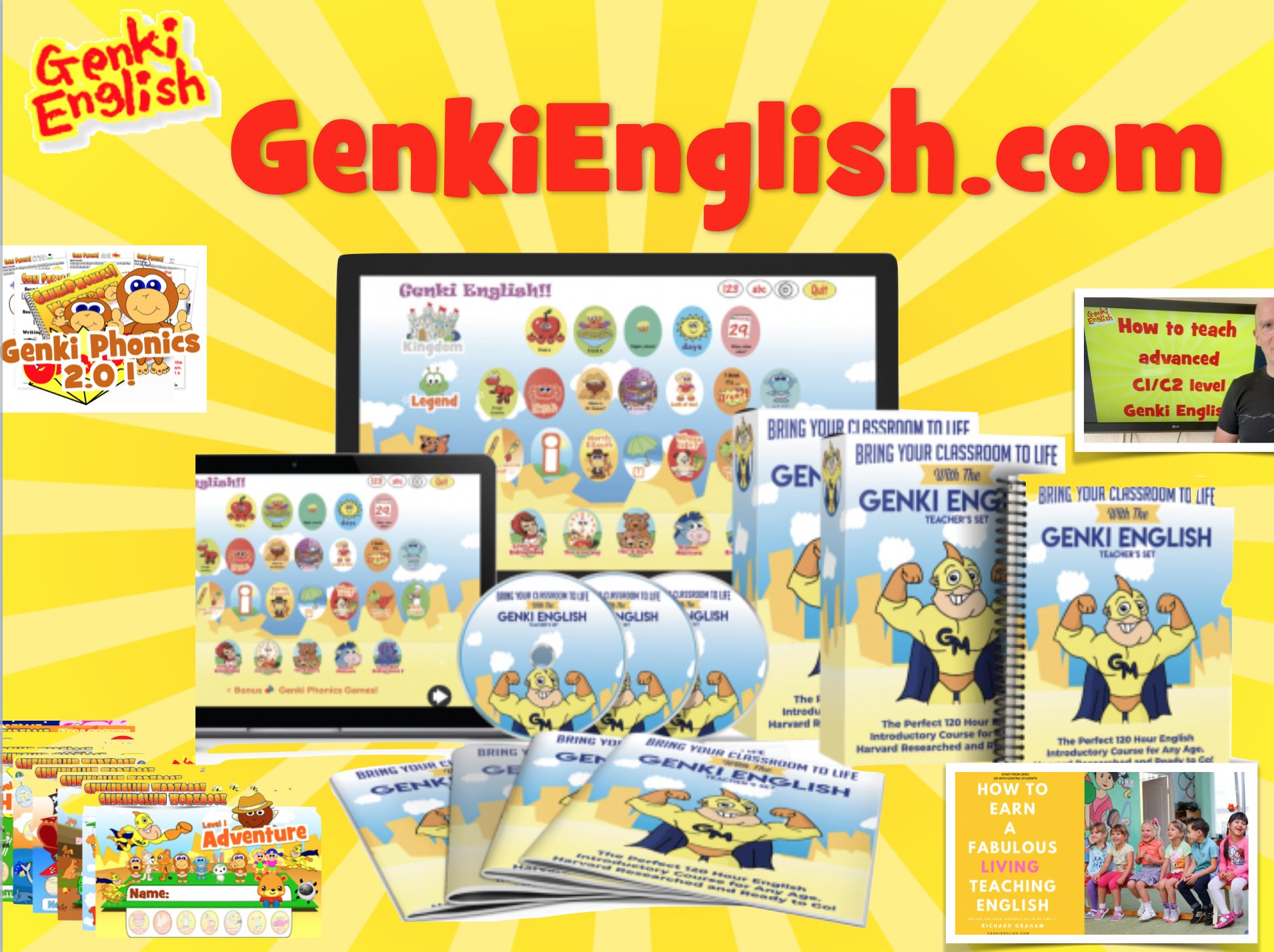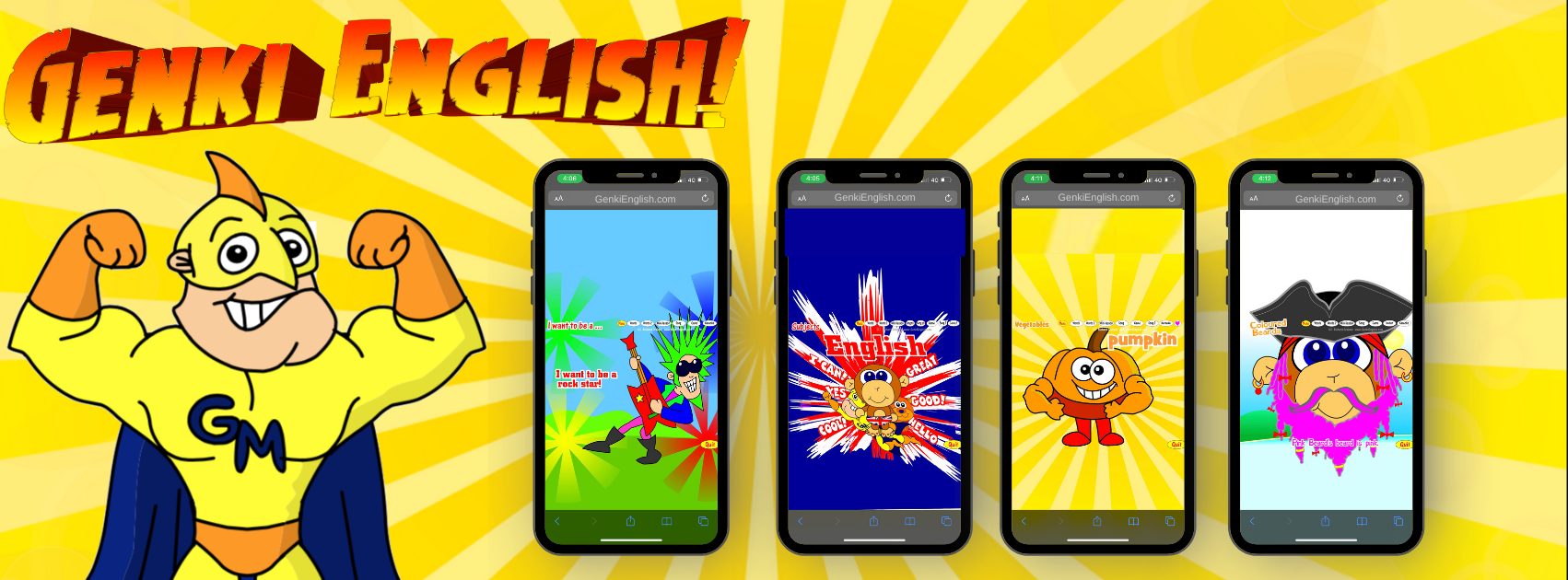 After the success (and great comments) of the last pdf book for combining phrases , Justice in Beijing has sent in another book.
After the success (and great comments) of the last pdf book for combining phrases , Justice in Beijing has sent in another book.
This time the focus is on “can” and gives great examples on how to build up to sentences like
Of course I can speak Chinese.
My father and mother can speak Chinese too, but my teacher can’t speak Chinese.
Or
Yes, I can play the piano , I can also play the violin. Henry can play the piano too, but he can’t play the violin.
Anyway, have a look at see for youself!
What other examples can you think of?
P.S. Something BIG coming for you very soon!




I love Justice’s new book that focuses on ‘can’. I am just about to teach the Super Hero songs to my students and I will enjoy reading this book to them. I am wondering if the last word on page 10 should be ‘drums’ instead of ‘guitar’?
I to have the kids read book! It’s great and very simple!
Very nice… wish I had better computer skills!
Thanks for sharing!
Nena
Justice,
thanks a lot for sharing this;
now I would like to ask a few questions:
This is very complex having lots of patterns in there; how do you use this?
I can think of several things:
using it like a picture book reading it to the kids, or have them read it~but this way they wouldn’t have the practice for the structures.
So, as I guess this is not what you are doing, how do you devide up your lessons to get the point of presentation?
like: no, …but
yes…also
of course…and ….also/too.
etc
Do you teach these by reading? or all mixed per lesson over many weeks and topics? or one per lesson? ??!
What I’ve been doing recently:
linking jobs+ all kinds of stuff; f.ex.
“I’m hungry. I want to eat.”
“Sorry, but I’m not a chef”
“My head hurts. I want some medicine.”
“Sorry. but I’m not a doctor.”
etc.
I started of with 2 basic sentences, each lesson I go on it is getting more complex>>
“I’m hungry. I want to eat some pizza.”
“Sorry. I’m not a chef.”
“OH. What do you do?
“I’m a …”
Or, I group them up with three kids, and one kid talks about the other:
“HEllo. His head hurts. He needs some medicine.”
“sorry. I’m not a doctor, but she is a doctor.”
~~~
It’s easy to get them to these points; but I’ve been wondering, what to do to make it stick, without continuing to do the same thing again and again. (There are still many new topics we want to learn)
So, seeing this I start wondering if a book like this would be a good idea.
Anyway, would be great to get an idea of how you progressed.
Thank you.
Margit
Hi, Richard and thank you very much for your present ( the book).It’s great and a wonderful help for us, because I think we are very tired and the pupils too.
Here, in Ponferrada it’s very hot and our legs are heavy and our brain can’t think but richard’s brain goes on working as the first time and as I can see, his legs go on moving too.
Thank you.
LINES
Commenting on what Margit says…
I would use it as a reading tool…with with kids that have already done all those types of phrases I like, I don’t like ..I can I can’t.. the use of too and but.
What I don’t understand is the question :
Who can play the drums?
The answer: Leon and Henry can play the guitar…WHY?????
Nena
Sorry guys for the late response , i didnt know the pictures books had a forum . There was a mix up on page 10 , it should be drums not guitar.
I use these picture books mostly as a reading tool , it helps the kids understand the lesson and exposes them to new vocabulary and new ways of expressing their thoughts. It works pretty well.